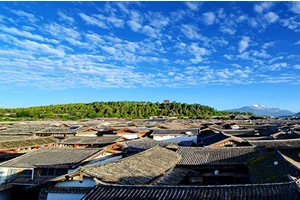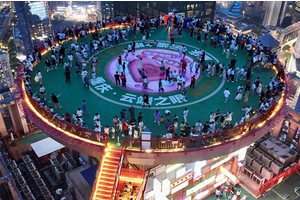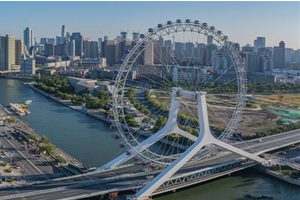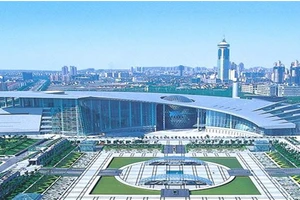Shantou tourism resources
According to the relevant responsibilities, the Municipal Tourism Bureau has set up four departments (rooms) to carry out its tasks.
(a) the office is responsible for handling daily affairs, including documents, meetings, confidential files, etc., and is also responsible for information, confidentiality, letters and visits, security, news propaganda and government affairs disclosure. In addition, the office also undertakes personnel, finance, labor, family planning and other work, and is responsible for discipline inspection, supervision and party-mass work. It is also responsible for formulating and implementing plans and projects for the use of tourism development funds, tourism talent planning, tourism education and training, and tourism professionals's vocational qualification standards and grading standards. At the same time, the office also guides the construction of spiritual civilization in the tourism industry.
(II) The Policy and Regulation Department (Planning Department) is responsible for formulating the municipal tourism policies, drafting local laws, regulations and normative documents, and for administrative reconsideration and administrative litigation. This section is also responsible for handling and supervising bills and proposals, and conducting pre-legal review of major administrative law enforcement actions made by this department. In addition, the Section also participates in the investigation and study of major issues concerning the reform of tourism system and tourism development, undertakes the general survey of tourism resources, and formulates medium-and long-term tourism development plans and regional tourism development plans to guide the planning of tourist areas. The department is also responsible for putting forward suggestions on the development and construction of tourism resources, organizing, coordinating and guiding the quality rating of tourist attractions. In addition, it is also responsible for promoting the protection of tourism resources and poverty alleviation through tourism.
(3) The Department of Resources and Market Development is responsible for formulating strategies for the protection of tourism resources and product development, and guiding social investment in tourism and the development of tourism industry. The section also guides the development and construction of key tourism products, tourist areas and tourist routes, formulates the tourism market development strategy and organizes its implementation. It is responsible for promoting the overall image of tourism, promoting tourism market and major promotional activities, and organizing and guiding major tourism festivals. In addition, the section is also responsible for domestic and international tourism cooperation and exchanges, implementing national tourism and leisure plans, and coordinating news media to publicize and report on tourism.
(4) The Quality Regulation and Management Section is responsible for supervising the order of the tourism market and the quality of service, examining and approving the application for the establishment of travel agencies engaged in domestic tourism business and inbound tourism business, and assisting the tourism administrative departments at higher levels in the declaration of outbound tourism business travel agencies. The Department is also responsible for the standardization, management and coordination of overseas travel, travel to Hongkong, Macao Special Administrative Region and Taiwan Province, and border tourism. In addition, the section guides and implements the quality standards and management of travel agencies and tourist hotels, supervises and guides tourism enterprises to do a good job in safety production, and is responsible for the collection, analysis and prediction of tourism statistics and tourism information. This section is also responsible for the work of tourism informatization and tourism portal, guiding the daily work of the city holiday tourism coordination group, and guiding the work of the city tourism industry-related associations.
Extended data
According to the Notice of Shantou Municipal Committee of the Communist Party of China and Shantou Municipal People's Government on Printing and Distributing the Institutional Reform Plan of Shantou Municipal People's Government (Shan Fa [2009] No.14), Shantou Tourism Bureau was established as the working department of the municipal government.
Shantou, located in the east of Guangdong Province, China, is a beautiful coastal city. There are many scenic spots worth exploring. The following are the eight scenic spots in Shantou and my personal views:
Chen Cifu's former residence in Chenghai: This historic building is one of the cultural heritages of Shantou, showing the history and culture of Shantou. Personally, it is full of traces of years, which makes people feel the historical background of Shantou.
Overseas Chinese Museum: This is a museum that displays overseas Chinese culture and shows the influence of overseas Chinese on Shantou and the world. I think this is a good place to learn about overseas Chinese culture and an important window to learn about Shantou's multiculturalism.
Nan 'ao Island: Nan 'ao Island is a bright pearl in Shantou, with beautiful beaches, rich marine resources and cultural heritage. I think this is a perfect holiday resort, which can relax people and enjoy the beautiful scenery of nature.
Qianshi Scenic Area: Located in the south of Shantou City, this scenic area is one of the famous scenic spots in Guangdong Province. There are many kinds of natural landscapes such as Qianshi Mountain, Bay and Beach, which is a good place for sightseeing, leisure and entertainment.
Chenghai Lianhuashan Hot Spring Resort: This is a place integrating hot springs, vacations and leisure. The hot springs have excellent water quality and beautiful environment, which makes people feel relaxed and comfortable.
Longquanyan Temple Group: Located in Chaonan District of Shantou City, Longquanyan Temple Group is a tourist attraction integrating natural landscape and human landscape. With its beautiful scenery and fresh air, it is a good place for mountain climbing and sightseeing.
Chenghai Caishe: This is a place that has preserved the traditional Chaoshan architecture and culture. There are ancient buildings, traditional handicrafts and food here, which makes people feel the rich Chaoshan cultural atmosphere.
Zhanglin ancient port: Zhanglin ancient port is a historical and cultural heritage of Shantou City. It was once one of the important ports in the Qing Dynasty, and now many ancient buildings and historical sites have been preserved. I think it is full of historical charm, which makes people feel the prosperity and glory of Shantou.
These are my personal views on the eight scenic spots in Shantou. Each scenic spot has its unique charm and value. I hope you can also explore and experience their beauty.
During the trip to Shantou, in order to ensure the safety and smoothness of the trip, there are some precautions to be observed:
Going out for shopping, accommodation and entertainment: during the trip in Shantou, tourists need to pay attention to some other matters. For example, when shopping, we should pay attention to comparing prices and quality to avoid buying fake and shoddy goods; Pay attention to the safety of personal belongings and take good care of your valuables when staying; Pay attention to the implementation of safety precautions during entertainment and abide by relevant safety regulations and tips.
Fire response: During the trip, if there is an emergency such as fire, tourists need to calmly judge the situation and scientifically choose ways to deal with it, such as reporting fire, fighting fire and avoiding danger. At the same time, we should also pay attention to the location of evacuation routes and escape routes in familiar places, as well as the storage location and use methods of fire extinguishers, smoke masks and other equipment.
In a word, during their travel in Shantou, tourists need to abide by local laws and regulations and the provisions of scenic spots, pay attention to the implementation of safety precautions and self-protection, and also respect local customs and cultural traditions to jointly create a civilized, harmonious and safe travel environment.






